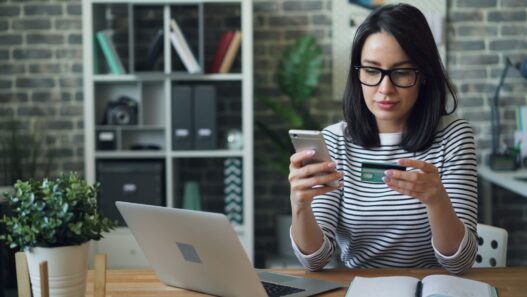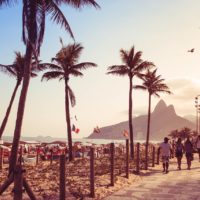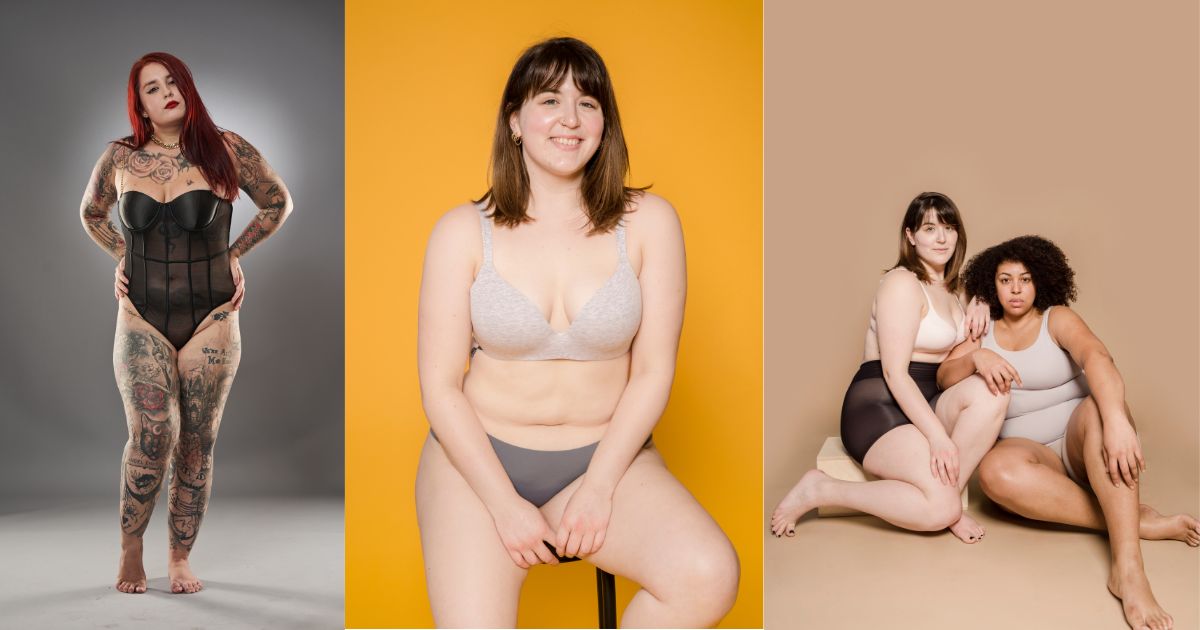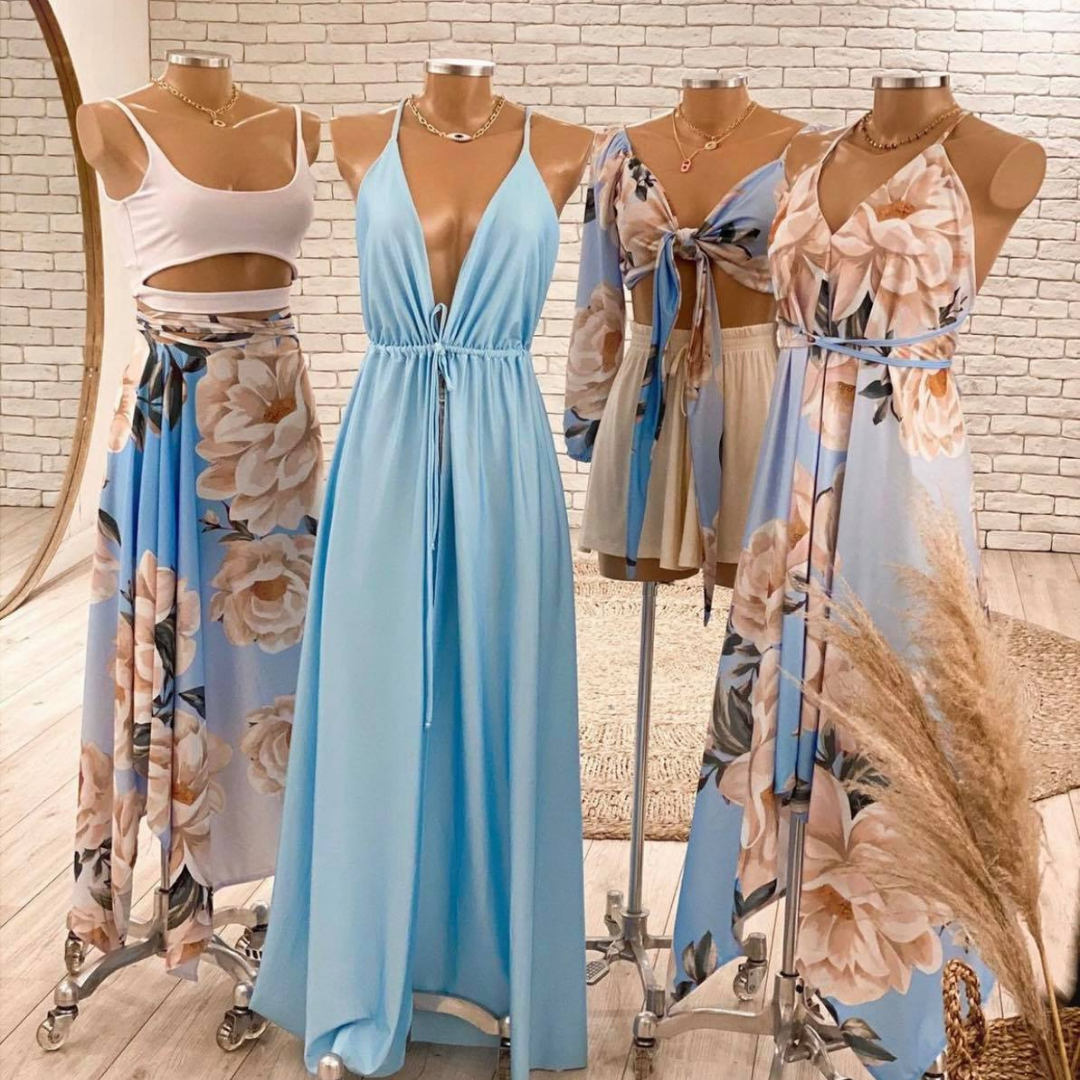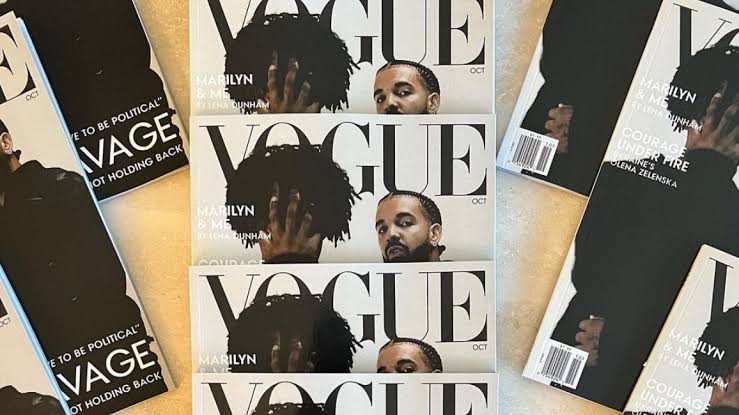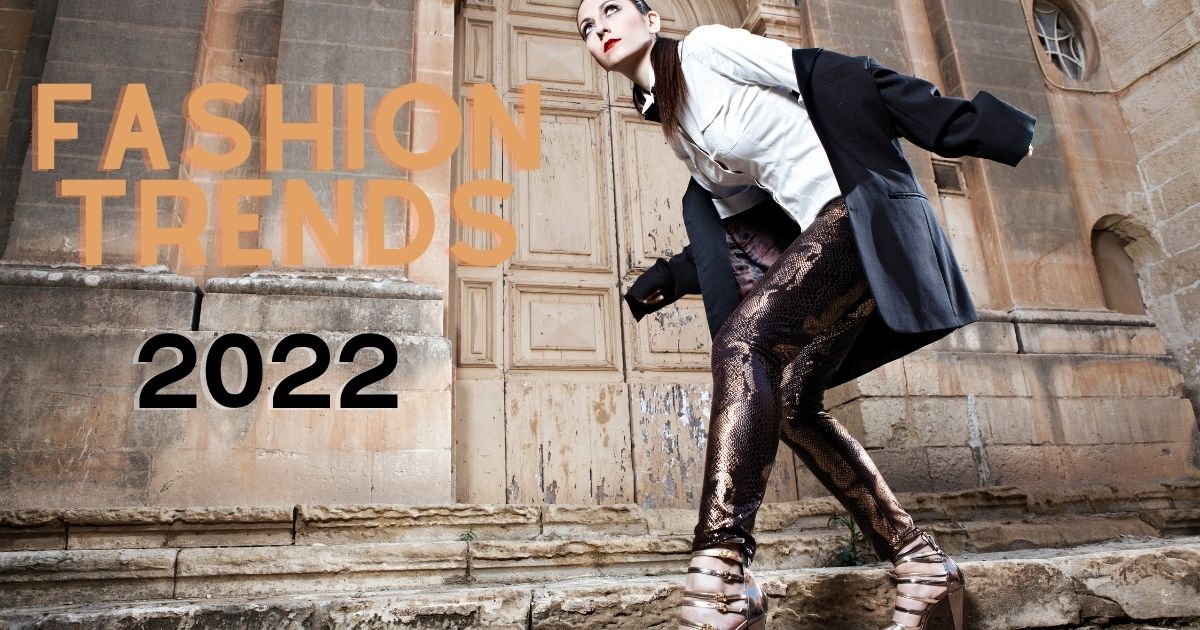Introduction
“I think it’s really giving the industry a pause … I think everybody is rethinking what the fashion industry stands for, what it means, what it should be.”
- Anna Wintour (Vogue Editor)
Our lives were going by smoothly, when in the year 2020 the world faced a pandemic called COVID-19, which led industries globally to face great economic effects. Since then, the entire world has been suffering from its aftermath and adjusting to the new normal lifestyle. It left no industry unharmed including a trillion-dollar industry like fashion. The recent months saw a downfall in numerous other industries as well either due to financial distress or because of excessive competition by rivals or lower sales. The pandemic affected all our daily lives in some way or the other, the way we socialize, work, schools and colleges, the way we eat, we shop and most importantly the way we DRESS. How we dress is seen as a way of expressing ourselves, our values, our ideals, what we believe in and most importantly how we want the world to perceive us which becomes our style. However, one good thing about this industry is its fashion. These two years of disruption have been worse for fashion and apparel as about 7 percent of companies have left the market entirely. Some of the brands, such as Brooks Brothers, have already gone bankrupt and put themselves up for sale.[1]
When we talk about fashion industry, the pandemic disrupted how we have always been shopping in stores, attending fashion shows, concerts, award ceremonies and for that matter of fact even the met gala and Grammy’s lost their charm. Domenico de Sole, chairman of Tom Ford International, remarked that “I have seen a lot of difficult situations in my long career, and this has been the most devastating event, not just for fashion and luxury, but all industries.”[2] In addition, virtual fashion shows and look books by various luxury brands were catering to provide an immersive experience to their audience via runway and sets. Further, various bands across the globe organised online concerts like BTS. The previous year’s Met Gala and Grammy’s were also conducted online which prevented idols, celebrities, and people of prestige from walking the carpet in their full honour and rigour. Adding to it, back in 2020, Armani was the first one to live stream his runway show, following him were Saint Laurent, Michael Kors etc.
Life during COVID-19
The industry felt immediate shocks to supply chains and sales, brands ranging from luxury to fast fashion were forced to close stores around the world, pivot to remote working, and furlough or lay off workers in a couple of weeks.[3] Factories and stores closed, and many will remain so. Many long-standing firms suffered and failed in the months that followed, while others shifted their focus to e-commerce sales, producing PPE and facemasks as well as other categories that were performing better, such as loungewear. Many designers including Giorgio Armani choose to think towards the positive aspect of it and took it as a unique opportunity to fix what was wrong – which is a lot – and create something new, more meaningful.[4]
As stepping out of our homes became a distant dream and work/school from home became the new normal, people started focusing more on their health, at home workouts, devoting time towards meditation, and eating healthy more than ever. Being comfortable was prioritised by all, unexpected fashion in the form of leisure wear or as one may call it casual wear, active wear, lounge wear etc took over. According to an analysis by Euromonitor International and Coresight published on CNBC, the U.S. athleisure market was expected to see sales total $105.1 billion in 2020 alone.[5] Further, what was seen was, “More and more companies are entering the athleisure category … attracted by its strong growth opportunities,” Weinswig added.[6]
Athleisure such as leggings, cycling shorts, track pants, oversized sweatshirts, were witnessed as being among the topmost star items whereas, in footwear, heels were replaced by crocs, sliders, loafers etc. Well can’t say we will miss them heels that much, bye bye four inches heels. Going further, according to Heuritech’s Instagram analysis 1 out of every 4 #covid-19 posts are related to a healthy lifestyle.[7] Going a step further, casualization paved its way. The whole world was seen shifting to virtual mode of living. From shopping online, to conducting client calls, video conferencing. Luxury brands such as Burberry and Gucci even conducted personalized video consultations to their customers to boost sales through the launch of video services. On the other hand, the retail model was failing badly.
However, as slowly as it may be, the world went from lockdown to un-lock, albeit exercising social distancing, carrying sanitisers to wearing masks when stepping out of our homes. Thanks to the digitalised world it became possible to work effectively and efficiently even in work from home model, yet there was some innovation and creativity that could not achieved to the best of the potentials. Nevertheless, models and designers managed fittings at home, organised meetings on zoom, pinned the outfits themselves, shared content, host podcasts and debates even during those difficult times.
Fashion Industry in Post Pandemic Era
During the pandemic reliability on social media increased as a result fashion influencers and bloggers were looked upon constantly and were all over brands Instagram feeds and Facebook timelines. For example, Khaby Lame, the famous tiktoker who rose to fame due to his short videos on Instagram, ended up becoming the second most followed person on the platform and a global fashion icon. Consumers, mainly Millennials and Gen-Z shoppers have become more and more aware about sustainable fashion, they want to know from where raw materials come from, how a particular item is being made, whether principles of social justice, fairness and equality are adhered to or not. Taking a lead in these initiatives is Ralph Lauren. The brand has committed “to removing at least 170 million bottles from landfills and oceans and will convert the use of all virgin poly-fibre to recycled poly-fibre by 2025,” says David Lauren, chief innovation officer in a recently issued press release on the eve of Earth Day.[8]
After COVID-19, fashion designers are concerned about eco-friendly and sustainable fashion. For instance, fast fashion brand like H&M is known for promoting sustainable fashion and highlighting the importance of after use activities of clothing like resale and recycling of previously owned items. Designers like Shivan and Narresh and Nimish Shah of Bhaane believe that the world will turn to mindfulness and sustainability. “The restart will have to be sustainable,” says Nimish Shah, creative director, Bhaane.[9] As a result of governments restricting international trade, another major impact that COVID-19 has had was on operations and global supply chains being cut off. As per a Bloomberg report published on March 23, there are about 1,089 garment factories in Bangladesh that have had orders worth roughly $1.5 billion cancelled due to the outbreak.[10] In United States, approx. 25,000 stores were reported to be closed because of the pandemic which is double of 2019. Fast fashion retailer Zara was also reportedly planning to shut down 1200 stores and invest a hefty €2.7 billion in digital stores.
The globe saw a huge rise in online shopping due to social distancing and even more increase in downloads of mobile applications. Speaking of digitalisation would be incomplete without referring to artificial intelligence, augmented reality, VR etc. As artificial intelligence operates mainly on the data that it is fed with, it is likely to play an important role in bridging the gap between human interaction and digital experience. By providing virtual try-ons, its involvement in data analysis, design, it is sure to provide a never experienced before moment taking over the traditional way of shopping in stores. Ralph Lauren and Snap Inc together will create virtual branded apparel for avatars, and in China a Net-a-Porter has launched Animal Crossing skins showcasing spring/summer collections having QR codes that connect the products with e-tailer stores.[11]
What was also be witnessed in the post covid times, was a long soaring practise of revenge buying[12], as consumers were making up for all the lost time and once again getting acquainted with latest trends and creativity in line of fashion and luxury as for the longest time the state of fashion sweatpants. One of the evident cases being that of Hermes boutique located at the upscale Taikoo Hui Guang-zhou shopping mall, which managed to make 19 million renminbi (which is roughly US$2.7 million, or approximately Rs 20.6 cr) on the day it reopened, according to WWD.[13] The concept was already proven correct in China and United States where department stores sales increase about 21%. But the same could not be held correctly for all fashion brands as some faced life altering changes and suffered huge losses.
Conclusion
The world of fashion is slowly getting back at its feet again. Businesses have resumed back to offline mode and are thriving hard to make up for lost profits due to the pandemic hence, taking growth as their main aim. People around the globe who have been slouching in lounge wear, sweatpants, casual wear would want to go out and play dress to impress. The need of the hour in terms of fashion is more glamour. As self-expression through fashion would not take a back seat even after coming out of the pandemic. Zara’s owner Inditex reported a jump of 80 percent in their quarterly profit as consumers who had been stuck at home remodelled their wardrobes. But also, just because consumers are shopping in malls and stores again and re living the experience does mean they’ll spend recklessly. As Forbes-Bell[14] also stated, “Comfort has remained an important fixture in our wardrobe and that’s something many will find hard to relinquish anytime soon.” Moreover, “Fashion is like a phoenix,” says Roksanda Ilincic. “It always manages to survive.”[15]
[1] Košuta VV, ‘THE POST-PANDEMIC FASHION INDUSTRY – Word Nerd’ (The Fashion Narrative) <https://www.wordnerd.eu/blog/the-post-pandemic-fashion-industry> accessed 11 December 2022
[2] THOMAS D, ‘What Will It Really Take To Fix Fashion?’ (British Vogue, 20 September 2020) <https://www.vogue.co.uk/fashion/article/fashion-after-coronavirus> accessed 14 December 2022
[3] ‘2020 Perspectives on the Business Impact of COVID-19 | McKinsey’ (McKinsey & Company, December 2020) <https://www.mckinsey.com/capabilities/risk-and-resilience/our-insights/covid-19-implications-for-business-2020> accessed 14 December 2022
[4] THOMAS D, ‘What Will It Really Take To Fix Fashion?’ (British Vogue, 20 September 2020) <https://www.vogue.co.uk/fashion/article/fashion-after-coronavirus> accessed 14 December 2022
[5] Thomas L, ‘The Athleisure Market Is Heating up as Consumers Flock to “Comfort in Uncomfortable Times”’ (CNBC) <https://www.cnbc.com/2020/11/26/holidays-2020-the-athleisure-market-heats-up-as-shoppers-want-comfort.html> accessed 12 December 2022
[6] ibid.
[7] Jaglan A, ‘Fashion Trends during and Post COVID-19 Scenario’ <http://www.fibre2fashion.com/industry-article/9241/fashion-trends-during-and-post-covid-19-scenario> accessed 11 December 2022
[8] Lockwood L, ‘David Lauren Promoted to Vice Chairman and Chief Innovation Officer at Ralph Lauren’ (WWD, 7 October 2016) <https://wwd.com/fashion-news/designer-luxury/david-lauren-promoted-to-vice-chairman-and-chief-innovation-officer-at-ralph-lauren-10657234/> accessed 14 December 2022
[9] ‘The Post-Coronavirus World: What Will the Fashion Industry Look like? – Elle India’ <https://elle.in/article/fashion-industry-post-coronavirus/> accessed 11 December 2022
[10] ‘What Makes Chanel No 5 the Most Popular Perfume in the World?’ (Lifestyle Asia India, 18 February 2020) <https://www.lifestyleasia.com/ind/beauty-grooming/grooming/chanel-no-5-most-popular-perfume-in-the-world/> accessed 12 December 2022
[11] Zeidan Y, ‘Fashion After Lockdown: The Future of the Fashion Industry’ (Criteo, 13 July 2020) <https://www.criteo.com/blog/fashion-after-lockdown/> accessed 13 December 2022
[12] Morgan B, ‘In A Post-Covid World Customers Will Be Revenge Shopping’ (Forbes) <https://www.forbes.com/sites/blakemorgan/2021/03/22/customers-are-ready-to-back-with-covid-revenge-shopping/> accessed 13 December 2022
[13] Dabral A, ‘Opinion: In a Post COVID-19 World, “Fashion with a Heart” Will Succeed’ (Lifestyle Asia India, 25 September 2021) <https://www.lifestyleasia.com/ind/style/fashion/post-covid-19-fashion-will-be-high-on-sustainability-and-technology/> accessed 11 December 2022
[14] Attardo K, ‘A Fashion Psychologist on Post-Pandemic Dressing’ [2021] Marie Claire Magazine <https://www.marieclaire.com/fashion/a36321088/post-pandemic-fashion/> accessed 11 December 2022
[15] THOMAS D, ‘What Will It Really Take To Fix Fashion?’ (British Vogue, 20 September 2020) <https://www.vogue.co.uk/fashion/article/fashion-after-coronavirus> accessed 14 December 2022
 Author: Shivangi Gupta
Author: Shivangi Gupta
Shivangi is pursuing her BA.LLB from ILS Law College, Pune. Her main interests are Fashion, Technology and Energy Law. In her free time, she enjoys reading, writing and debating.





